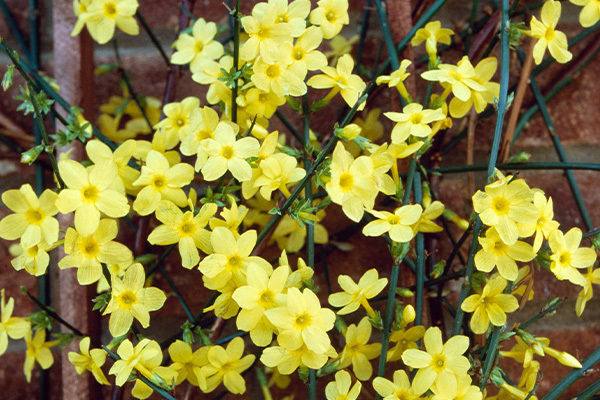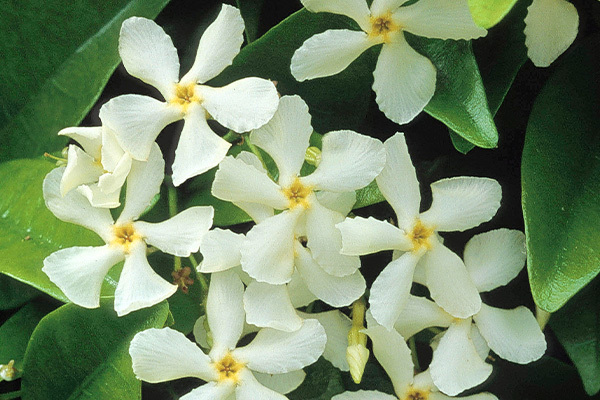
What We've Included
When to Plant | Where to Plant | How to Plant | Feeding | When to Water | Mulching | Pruning | Propagating | Common Issues & How to Solve them | When will they Flower
When to Plant Jasmine
Jasmine can be planted in spring, autumn, or even winter – depending on the variety! To help, here’s a handy guide:
- If they flower in summer, plant in spring/autumn
- If they flower in winter, plant in autumn/winter

Where to Plant Jasmine
Jasmine plants love a wall or sturdy fence to grow and trail up. Make sure their soil is well-drained and sits in a sunny spot in the garden. Several varieties of Jasmine can tolerate partial shade or even full shade, but by nature, they prefer full sun. Jasmines can also be grown in large containers!
How to Plant Jasmine
Jasmine is usually supplied in modules and pots, which are incredibly easy to plant and maintain.
- Dig a hole in the border that’s big enough to house the entire module, adding well-rotted manure to the bottom of the planting hole. If planting in pots, fill a large pot halfway with potting soil and then make several holes that can hold the modules. Do this until the top of the soil from the module is just below the top of the pot.
- Provide support like a cane or trellis.
- Fill around the modules with soil and firm them down gently.
- Water well and you’re done!
Feeding Jasmine
Jasmines can be given a general-purpose fertiliser in spring, which will encourage further growth. Throughout the flowering months, you can add a high-potassium feed.
Jasmines grown in containers can be fed with a high-potassium liquid feed, like a tomato fertiliser.

When to Water Jasmine
Water new Jasmine regularly for their first year. After their first year, they can be quite drought tolerant and won’t need additional watering (except for in extreme drought). However, container-grown Jasmine will dry out quickly so make sure to water them well regularly, especially in summer.
Mulching Jasmine
If you have jasmines grown in the ground, then it’s worth adding mulch over the root area in autumn. This helps the soil retain moisture and stop weeds from growing! This mulch can be made from organic matter like garden compost.
Pruning Jasmine
Jasmines can be pruned each year to help keep them neat, avoiding congested growth. The thing to remember when pruning jasmine is to cut flowering stems down to a strong side shoot lower down. Thinning out overcrowded areas will help too, or any damaged and weak stems.
You can prune summer-flowering jasmines in late summer/early autumn. Winter jasmine can be pruned in spring after flowering.

Propagating Jasmine
You can propagate jasmines by taking hardwood cuttings in winter. Tender varieties can be propagated by semi-ripe cuttings in spring/summer. Some varieties also produce berries, which can be sown.
Common Issues and How to Solve Them
Jasmines are quite robust and don’t run into much trouble. However, some varieties aren’t as hardy as their winter siblings, so they can be damaged by winter weather.
Some varieties can also attract sap-feeding pests, like mealybugs and red spider mites. If you catch them early, this makes it easier to treat, so always be on the lookout for these pests.
Mealybugs can be controlled by taking off dead leaves, which should be taken away and destroyed.
Red spider mites cause mottled leaves. They can be avoided by making sure the plants are sprayed often with water to keep their surroundings humid – red spider mites love dry conditions.
When does Jasmine flower?
Flowering times will vary based on what plant you buy! As we’ve mentioned above, different jasmine plants flower in summer or in winter. Double-check your plant for exact flowering times!

